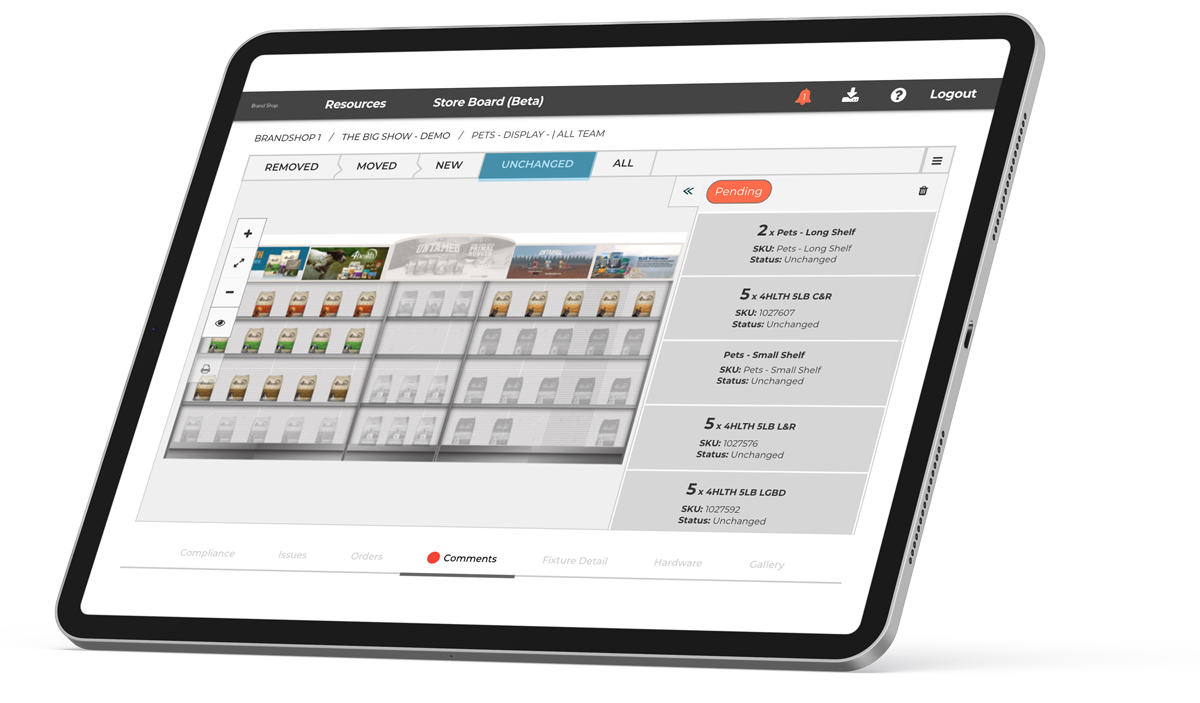The retail industry is constantly evolving, and technology is at the forefront of this innovation. From mobile apps like Shopkick and Ibotta to visual merchandising platforms like One Door, retailers are leveraging technology to create more engaging and personalized experiences for their customers. This helps drive customer loyalty and easy in-store wayfinding to increase sales and efficiency. The future of retail technology is changing for the better, but it’s up to the retail teams in headquarters to streamline their tech stack and communications to stay ahead of the curve.
Below are technological innovations that are quickly changing the retail landscape:
Omnichannel Retail Technology
Omnichannel retail technology is helping retailers, marketers, and sales create a more integrated and seamless experience for customers, which in turn, helps visual merchandisers create customer success throughout their plans. Beacon technology, for example, helps visual merchandisers better align with marketing campaigns through sending customers leveraged, personalized offers and promotions when they are in-store.
Additionally, technology like radio frequency identification technology (RFID) empowers all retail teams, from the frontlines to retailers in headquarters, to prevent inventory shortages by providing real-time inventory data. In effect, this technology, combined with analytics, drives operational efficiencies for visual merchandisers when they plan out their displays by better understanding the inventory needs and customer behavior at the same time.
Mobile Point-of-Sale (mPOS)
With a focus on customer experience, mobile point-of-sale technology goes hand-in-hand with the retail experience. mPOS allows retailers to conduct transactions using a mobile device, such as a smartphone or tablet. This technology can be used to provide customers with a more seamless and convenient checkout experience, as well as to reduce the need for traditional checkout counters, playing a huge part in streamlining the customer experience and changing the way store plans are created.
mPOS can also be used to collect customer data, such as email addresses and purchase history, which can be used to personalize the shopping experience and build customer loyalty, tying in to the omnichannel technology of in-store notifications to drive sales.
Artificial Intelligence
With everyone talking about AI from every angle, there’s no way to not include it here. However, there are specific benefits for retailers and visual merchandisers to leverage AI for success in their roles and for their organizations.
Artificial intelligence is the ability of computers to learn and perform tasks that typically require human input, such as pattern recognition and decision-making. In retail, AI can be used to personalize the shopping experience for customers. A retailer could use AI to recommend products based on a customer’s past purchases, browsing history, and preferences. AI can also be used to optimize pricing and inventory management, ensuring that retailers are offering the right in-store products at the right price at the right time.
As for visual merchandising specifically, AI is being heavily incorporated into almost every retail technology to aid in store brand compliance and computer vision for planning success. AI can also aid in identifying customer behaviors to give visual merchandisers an advantage in creating more efficient store plans.
Visual Merchandising Platforms
Like the powerful emergence of artificial intelligence, visual merchandising platforms that provide a single source of truth for creating planograms and implementing them in-store are an integral part of retail success. One Door’s platform offers advanced analytics capabilities that allow retailers to survey the execution times, brand compliance, and more. By analyzing data on customer engagement and sales performance, retailers can make more informed decisions about how to optimize their displays to maximize ROI.
With One Door’s digital merchandising platform, retailers can create and manage their visual displays more efficiently, allowing them to focus on creating a better customer experience.
One Door’s analytical features are particularly valuable in the current retail landscape, where competition is fierce, and retailers need to be able to measure the effectiveness of their displays quickly and easily. This includes the abilityto better understand planogram performance and customer behavior. With One Door’s digital merchandising platform, retailers can create and manage their visual displays more efficiently, allowing them to focus on creating a better customer experience.
With a focus on streamlining and customizing communicating to stores about the upcoming changes, visual merchandising platforms save retailers time, money, and frustration. They especially help when figuring out which changes apply to which stores, and relieving any blockers for employees executing on the communicated changes.
The retail industry is in the midst of a significant transformation, and technology is driving a lot of this change. As retailers look for ways to create more engaging and personalized experiences for customers, visual merchandising technology is becoming increasingly important. One Door allows visual merchandising teams to communicate changes quickly and effectively, without worrying about any extra work involved.
Find the right tools for your team’s success
One Door’s platform is just one example of how technology is helping retailers to create more effective visual merchandising displays. By analyzing data on customer engagement and sales performance, retailers can make more informed decisions. One Door is helping retailers to stay ahead of the curve and deliver the kind of shopping experiences that customers expect.
Ready to upgrade your tech stack and step into the future of retail? Learn more about One Door here
